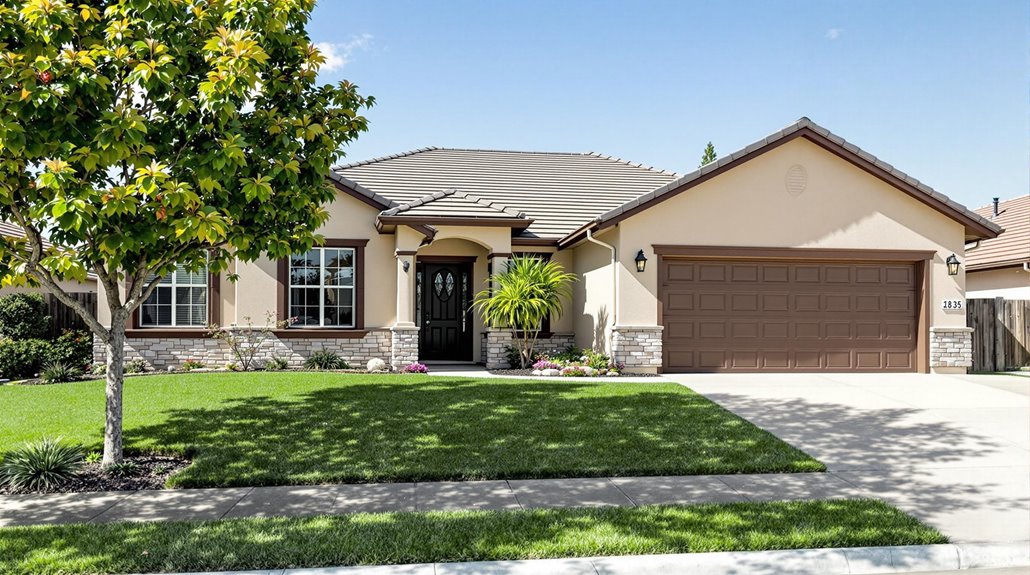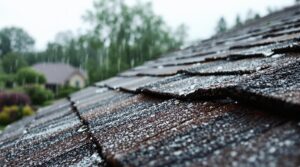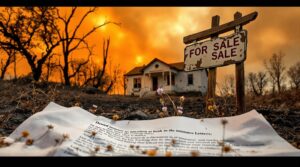To estimate your homeowners insurance, you must first understand the basics of homeowners insurance, including dwelling coverage, personal property, and liability. Accurate home valuation is essential, typically determined through professional appraisals or property valuations, and considers factors like size and style. Replacement cost coverage options, such as Actual Cash Value or Replacement Cost Value, greatly impact premium rates and protection adequacy. Local risk factors, like location and construction type, are also considered in premium calculations. By understanding these factors, you can estimate your homeowners insurance and identify potential coverage gaps, setting the foundation for further exploration of insurance intricacies.
Key Takeaways
- Accurate home valuation is crucial for ensuring adequate insurance coverage, consider hiring a professional appraiser or using online valuation tools.
- Calculate replacement costs by considering factors like property size, style, and features, as well as local construction costs.
- Determine the value of personal property by creating a detailed inventory with estimated values and photographic evidence.
- Assess individual risk profiles and potential losses, including location, construction type, and claim history, to estimate premiums.
- Consider coverage options like Actual Cash Value, Replacement Cost Value, and Guaranteed Replacement Cost to determine the best coverage for your needs.
Understand Homeowners Insurance Basics

A thorough understanding of homeowners insurance is the foundation upon which informed decisions are made, safeguarding one’s largest investment – their home. Homeowners must recognize their responsibilities in maintaining adequate coverage, dispelling common insurance myths that may lead to underinsured homes. It is essential to acknowledge that homeowners insurance not only protects the physical structure but also the homeowner’s financial well-being. Adequate coverage guarantees that homeowners can recover from unforeseen events, such as natural disasters or liability claims, without depleting their financial resources. By understanding the basics of homeowners insurance, individuals can make informed decisions about their coverage needs, selecting policies that provide sufficient protection for their homes and personal property. This knowledge empowers homeowners to navigate the complexities of insurance calculations. Standard policies typically include dwelling coverage protection along with personal property, loss of use, and liability coverage components. Policy endorsements allow homeowners to modify existing coverage to better suit their specific needs and valuable possessions. Additionally, seeking professional advice can further enhance homeowners’ understanding of their policy options and limitations. Insurance agents often provide valuable homeowners insurance coverage recommendations that cater to individual circumstances, ensuring that unique needs are met. By being proactive in reviewing and adjusting their policies, homeowners can fortify their protection against potential risks, fostering peace of mind in the process.
Learn How Insurers Calculate Premiums
Insurance companies employ complex calculations to determine premiums for homeowners policies, taking into account various factors that assess an individual’s risk profile and potential for loss. Premium calculations involve a combination of pure premium, expense ratio, and gross premium. Pure premium is calculated by dividing total property losses by total property value, while expense ratio includes operational costs, taxes, and desired profit margins. Risk assessment is a critical component of premium calculations, as insurers consider factors such as location, construction type, and personal claim history to determine an individual’s likelihood of filing a claim. By understanding these factors, homeowners can better navigate the insurance landscape and make informed decisions about their coverage needs. Effective risk assessment enables insurers to set premiums that accurately reflect an individual’s risk profile. Filing multiple roof damage claims can significantly impact future premium rates and may even lead to policy cancellation. Working with a public adjuster can help homeowners navigate complex claims processes and ensure fair settlements.
Assess Your Home’s Value

When determining the appropriate level of homeowners insurance coverage, accurately evaluating your home’s value is essential to confirm adequate financial protection in the event of a loss or damage. Conducting a home appraisal or seeking professional property valuation enables you to determine your home’s replacement cost, allowing for more informed coverage decisions. Reviewing the property’s features, such as the number of bedrooms, square footage, and architectural style, helps in identifying an accurate valuation. Additionally, updating the home’s features and valuation after renovations or improvements confirms your insurance coverage remains relevant. Just as business interruption coverage helps protect against financial losses during downtime, a thorough property assessment helps prevent underinsurance or overinsurance, ultimately protecting their investment and confirming financial stability. This assessment supports choosing suitable coverage limits and plan options. For water-related damages, working with public insurance adjusters can help ensure accurate valuation of potential losses and maximum claim settlements.
Choose Replacement Cost Coverage
Several key factors must be considered when selecting a replacement cost coverage option for homeowners insurance. Replacement cost coverage options directly impact premium rates and overall coverage adequacy. Four primary types of replacement cost coverage options are available: Actual Cash Value (ACV), Replacement Cost Value (RCV), Guaranteed Replacement Cost, and Extended Replacement Cost. Each option offers distinct benefits, with RCV covering full replacement costs without depreciation, making it a popular choice. Guaranteed Replacement Cost and Extended Replacement Cost provide additional protection against construction cost fluctuations, ideal for areas with unpredictable construction costs. Public adjuster services can help ensure accurate valuation of replacement costs and maximize claim settlements. Analyzing these coverage options in relation to individual needs and location will guarantee adequate protection and minimize financial risk. Accurate assessment of replacement cost coverage is vital for making informed homeowners insurance decisions. Regular maintenance schedules can help protect property value and potentially reduce insurance premiums by 10-15%.
Estimate Personal Property Value

A thorough assessment of personal property value is essential for determining adequate homeowners insurance coverage. To achieve this, creating a detailed personal inventory is critical. This inventory should include estimated values of all personal belongings, supported by photographic and video evidence. Homeowners can utilize various valuation methods, such as actual cash value or replacement cost value, to determine the worth of their possessions. Insurance claim documentation must be carefully organized to support potential property damage claims in the future. By meticulously documenting and updating this inventory annually, homeowners can guarantee that their insurance coverage accurately reflects their current needs. Collaborating with insurance agents can also provide tailored estimates and guidance on selecting suitable valuation methods, ultimately leading to more effective risk management and financial protection. Accurate personal property valuation is fundamental for reliable homeowners insurance coverage. Working with public insurance adjusters can help ensure fair compensation when filing property damage claims.
Consider Local Risk Factors
Local risk factors greatly impact homeowners insurance premiums and coverage needs, making it essential for homeowners to assess the specific hazards associated with their geographic location. Proximity to flood zones, high crime rates, and areas prone to natural disasters can considerably increase premium rates and the need for extensive coverage. Insurers consider these risks when calculating premiums and determining policy limitations. By understanding local risks, homeowners can better estimate their insurance needs and adjust their coverage accordingly. This consideration enables homeowners to make informed decisions about their policy, ensuring they have adequate protection in place to safeguard their investment. Working with public insurance adjusters can help homeowners accurately assess flood damage and maximize their insurance claims in high-risk flood zones. Residents in hurricane-prone regions should document pre-storm conditions with detailed photographs to strengthen potential insurance claims.
Review and Adjust Your Policy

Half of all homeowners are underinsured, with 64% of policyholders neglecting to review their coverage options annually. Professional assistance from legal representation may be necessary if disputes arise with insurers over coverage. Conducting regular assessments helps bridge gaps between required and actual coverage, mitigating potential financial loss. Analyze current conditions, accounting for changes in property value or newly acquired possessions, to establish updated coverage needs. This analysis can aid in identifying policy adjustments, be they revisions to existing coverage limits, the addition of specialized riders, or escalated premium payments. By parsing through coverage details and running possible scenarios, individuals can better prepare their current policies for when disaster strikes, apprising homeowners and engaging them more dynamically in managing coverage options in a specially-tailored approach befitting fiercely loyal individuals safeguarding treasured, cherished homesteads. If your claim has been underpaid, working with public insurance adjusters can help ensure you receive fair compensation for your losses.
Frequently Asked Questions
Does Homeowners Insurance Cover Damage Caused by Pets?
Homeowners insurance policies often include pet liability coverage, which protects against damages caused by pets. However, coverage limits and deductible amounts may vary, and certain breed restrictions or exclusions may apply, affecting overall coverage.
How Does a Past Claim Impact My Homeowners Insurance Premium?
A past claim can considerably impact your homeowners insurance premium, as insurers view claim history as an indicator of risk. A single claim can lead to a premium increase, with multiple claims potentially resulting in higher rates.
Can I Purchase Homeowners Insurance Without an Inspection?
Like an elusive needle in a haystack, evading home inspections may prove futile; most insurers require an assessment to determine policy terms, but some may offer exceptions depending on certain insurance requirements and property conditions.
Are Home Maintenance Costs Covered by Homeowners Insurance?
Standard homeowners insurance typically doesn’t cover routine home maintenance costs, such as repairs and replacements due to wear and tear, as insurance coverage primarily focuses on damages from unforeseen events and covered perils.
Can Homeowners Insurance Cover Multiple Properties or Locations?
An umbrella shields multiple structures, symbolizing protection. Homeowners insurance can cover multiple properties or locations, including rental properties, but each location requires separate policies, adhering to respective policy limits, and evaluating individual risk profiles.
Final Thoughts
Ironically, safeguarding the largest investment often begins with a calculated risk. Estimating homeowners insurance effectively requires thorough consideration of replacement cost, location, coverage level, and claim history. The premiums protecting against natural disasters, theft, and liability claims are only as reliable as the data informing them. A fortified investment future demands accurate calculations, meticulous documentation, and a keen understanding of risk assessment. Inattention to detail invites vulnerability, rendering the safeguards useless.








